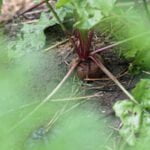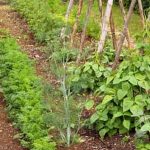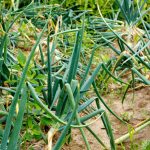What flowers go well in vegetable gardens? The inclusion of flowers in a vegetable garden can provide numerous benefits, such as attracting pollinators, enhancing vegetable growth, and adding beauty to your garden space.
In this article, we will explore the advantages of incorporating flowers into your vegetable garden and discuss the factors to consider when choosing the right flowers. We will also delve into companion planting, flower varieties that complement different types of vegetables, and tips for maintaining a healthy balance in your garden.
Flowers play a crucial role in vegetable gardens by attracting beneficial insects like bees and butterflies, which are essential for pollination. Additionally, certain flowers can help deter pests or attract beneficial insects that prey on harmful pests, ultimately contributing to a healthier garden ecosystem. Understanding the relationship between flowers and vegetables is key to creating a thriving and productive garden.
When it comes to selecting flowers for a vegetable garden, there are various factors to consider such as bloom time, height, color, and compatibility with specific vegetables. By carefully choosing the right flowers to accompany your vegetables, you can create an aesthetically pleasing and bountiful garden that serves both functional and ornamental purposes.
In the following sections of this article, we will delve deeper into these considerations and explore how certain flowers can enhance the growth and overall well-being of your vegetables.
Choosing the Right Flowers
When considering which flowers to incorporate into your vegetable garden, there are several factors to take into account to ensure a successful and harmonious landscape.
Sunlight and Soil Requirements
Before selecting flowers for your vegetable garden, it’s important to assess the sunlight and soil conditions of your garden space. Some flowers thrive in full sun, while others prefer partial shade. Additionally, understanding the pH level and moisture preferences of the soil will help you choose flowers that will complement the existing growing conditions of your vegetables.
Height and Spread
Another important factor to consider when choosing flowers for your vegetable garden is their height and spread. Taller flowers may provide shade for certain vegetable plants or serve as a backdrop for smaller crops, while sprawling or bushy flowers may compete for space with your vegetables. It’s essential to select flowers that will not overshadow or overcrowd the growth of your edible plants.
Pest Control and Disease Resistance
Certain flowers have natural pest-repelling properties or attract beneficial insects that can help control pests in the vegetable garden. Marigolds, for example, can deter nematodes in the soil, while attracting pollinators like bees. By strategically choosing flowers that offer protection against common garden pests, you can create a more resilient and sustainable growing environment for your vegetables.
Companion Planting
Understanding the Benefits of Companion Planting
Companion planting involves growing different plants close to each other in order to reap the benefits of their symbiotic relationship. In vegetable gardens, certain flowers can actually enhance the growth and health of surrounding vegetables. By understanding which flowers work well as companions to specific vegetables, gardeners can create a more harmonious and productive garden.
Flowers That Deter Pests
One of the key benefits of companion planting with flowers in vegetable gardens is their ability to deter pests. For example, marigolds are known for their ability to repel nematodes in the soil, which can be harmful to plant roots. Similarly, nasturtiums act as a natural pest repellent by attracting aphids away from the vegetables. By strategically planting these flowers among their vegetable counterparts, gardeners can naturally protect their crops from potential harm.
Promoting Pollination and Soil Health
In addition to deterring pests, certain flowers can also enhance pollination and improve soil health in vegetable gardens. Bees and butterflies are attracted to many types of flowers, and their presence in the garden can lead to better pollination of vegetable crops.
Additionally, some flowers have properties that enrich the soil by fixing nitrogen or attracting beneficial insects like ladybugs or lacewings, which feed on harmful pests. By incorporating these companion flowers into a vegetable garden, gardeners can promote a healthier ecosystem for all plants involved.
Pollinator-Friendly Flowers
When planning a vegetable garden, it’s important to consider the role of pollinators in the overall health and productivity of your plants. By incorporating pollinator-friendly flowers into your garden, you can attract bees, butterflies, and other beneficial insects that will help with the pollination process. Here are some flower varieties that are known for their appeal to pollinators:
- Lavender: This fragrant herb produces beautiful purple flowers that are highly attractive to bees and butterflies. Additionally, its strong scent can deter pests like mosquitoes and flies.
- Sunflowers: These cheerful blooms not only add visual interest to your garden but also serve as a valuable food source for bees. Their large size and bright color make them easy for pollinators to spot.
- Marigolds: In addition to their pest-repelling properties, marigolds produce vibrant orange and yellow flowers that attract both bees and butterflies. They are also known to deter nematodes in the soil, making them a valuable companion plant for vegetables.
Incorporating these and other pollinator-friendly flowers into your vegetable garden can create a more balanced ecosystem, leading to improved yields and overall plant health. Additionally, watching the activity of bees and butterflies in your garden can be a rewarding experience that adds beauty and vitality to your outdoor space.
Remember to plant a variety of flowers that bloom at different times throughout the growing season to provide a continuous food source for pollinators. By prioritizing the needs of these important insects, you can contribute to the health of your vegetable garden as a whole.
Flower Varieties for Different Vegetable Types
When it comes to choosing the right flowers for your vegetable garden, it’s important to consider which varieties complement different types of vegetables. For tomatoes, marigolds are an excellent choice due to their ability to repel pests such as nematodes. Additionally, nasturtiums can act as a deterrent for aphids and whiteflies while also attracting beneficial insects like predatory spiders.
If you’re growing peppers, consider planting petunias around them. Petunias are known to repel certain insects that prey on pepper plants, such as leafhoppers and aphids. Another great option for companion planting with peppers is ageratum, which can help keep root knot nematodes at bay.
For leafy greens such as lettuce and spinach, consider incorporating alyssum into your garden. This low-growing flower not only attracts pollinators but also helps in deterring cabbage moths and other pests from attacking your leafy greens. Additionally, calendula is another great option for its ability to repel certain pests while also adding beauty to the garden.
By choosing the right flowers for your specific vegetable types, you can create a harmonious and bountiful garden that is both visually appealing and productive.
| Vegetable | Recommended Flowers |
|---|---|
| Tomatoes | Marigolds, Nasturtiums |
| Peppers | Petunias, Ageratum |
| Leafy Greens (Lettuce, Spinach) | Alyssum, Calendula |
Incorporating Edible Flowers
When it comes to vegetable gardening, many people focus solely on growing a productive crop without considering the aesthetic appeal of their garden. However, incorporating edible flowers into your vegetable garden not only adds beauty but also brings functionality to your outdoor space. Here are several reasons why considering edible flowers is beneficial for your garden:
- Enhanced visual appeal: Edible flowers add vibrant colors and unique shapes to your vegetable garden, creating an aesthetically pleasing environment for both you and your visitors.
- Dual purpose plants: By including edible flowers in your garden, you can enjoy both the visual aspect and the practical aspect of using them in culinary applications.
- Pollinator attraction: Many edible flowers attract beneficial pollinators such as bees and butterflies, which can help improve the overall health and productivity of your vegetable crops.
There are numerous edible flower varieties that can be seamlessly incorporated into your vegetable garden. Some popular options include nasturtiums, violets, calendula, borage, and chamomile. These flowers not only look stunning but also offer unique flavors that can enhance salads, desserts, and even beverages. Additionally, choosing edible flowers that complement the flavors of your vegetables can elevate the taste of your home-cooked meals while adding a visually appealing touch.
To ensure successful integration of edible flowers into your vegetable garden:
- Research each flower variety to understand its growing habits, sunlight requirements, and potential interactions with specific vegetables.
- Strategically plant edible flowers around the perimeter or between rows of vegetables to maximize space usage without overcrowding or competing for resources.
- Maintain proper care for both the vegetables and the edible flowers by providing adequate water, nutrients, and attention to any signs of pest infestations or disease.
By thoughtful selection and placement of these dual-purpose plants in your vegetable garden, you can create a harmonious balance between functionality and beauty while reaping the rewards of a bountiful harvest coupled with gorgeous blooms.
Tips for Maintaining a Healthy Balance
Preventing overcrowding of flowers in your vegetable garden is essential for maintaining a healthy balance and ensuring that your vegetables receive the proper care and nutrients they need to thrive. When planning the layout of your garden, it’s important to consider the space required for each type of flower and vegetable to prevent overcrowding and competition.
One tip for preventing flower overcrowding in the garden is to carefully research and plan the spacing requirements for each variety of flower you want to include. Some flowers may require more space than others, so it’s important to take this into consideration when designing your garden layout. Additionally, consider the mature size of each plant when spacing them out, as overcrowding can lead to poor air circulation and increased risk of disease.
Another helpful tip for maintaining a healthy balance in your vegetable garden is to regularly monitor and maintain the growth of your flowers. This includes pruning, deadheading, and thinning out any overgrown areas as needed. By staying on top of maintenance tasks, you can prevent overcrowding and ensure that both your flowers and vegetables have enough room to thrive.
Properly managing the soil in your garden is also crucial for preventing flower overcrowding. Nutrient-rich soil will promote healthy growth for both flowers and vegetables, while also helping to control weed growth that can contribute to overcrowding issues. Consider using organic mulch or compost to enrich the soil and create an optimal growing environment for all plants in your garden.
| Preventing Flower Overcrowding | Tips |
|---|---|
| Research Spacing Requirements | Consider mature size, air circulation, disease risk |
| Maintain Growth | Regular pruning, deadheading, thinning out |
| Manage Soil | Use nutrient-rich soil, organic mulch or compost |
Conclusion
In conclusion, incorporating the right flowers into your vegetable garden can have a multitude of benefits. Not only do flowers add beauty and color to the garden, but they also play a crucial role in attracting pollinators and warding off pests. By choosing the right flowers and carefully considering factors such as companion planting and the specific needs of different types of vegetables, you can create a harmonious and bountiful garden that thrives with the help of these floral companions.
It is important to remember that when selecting flowers for your vegetable garden, you should take into consideration factors such as soil quality, sunlight requirements, and water needs. Additionally, companion planting with the right flowers can help to improve the overall health and yield of your vegetable crops. By attracting beneficial insects and repelling harmful pests, certain flowers can contribute to a more sustainable and balanced ecosystem within your garden.
Incorporating edible flowers into your vegetable garden not only adds visual appeal but can also enhance your culinary experience by providing edible blooms that can be used in salads, teas, or as garnishes. Ultimately, by maintaining a healthy balance and preventing overcrowding of flowers in the garden, you can create an environment where both vegetables and flowers flourish in tandem, resulting in a thriving and productive vegetable garden.
Frequently Asked Questions
What Flowers Should I Put in a Vegetable Garden?
Flowers that you should put in a vegetable garden are those that can attract beneficial insects, repel pests, and improve the overall health of the garden. Examples of such flowers include calendula, nasturtium, marigold, and lavender. These flowers can help to create a healthy ecosystem within the vegetable garden.
Is It Good to Plant Marigolds in a Vegetable Garden?
Yes, it is good to plant marigolds in a vegetable garden. Marigolds are known for their ability to repel harmful insects such as nematodes and whiteflies. They also add bright color and beauty to the garden while serving a practical purpose. Additionally, marigolds are easy to grow and require minimal maintenance.
What Flowers Pair Well With Vegetables?
There are several flowers that pair well with vegetables in a garden setting. For example, sunflowers can provide shade for more delicate plants and also attract pollinators. Nasturtiums can act as a sacrificial trap crop for aphids and caterpillars while adding edible blooms to salads or garnishes.
Additionally, herbs like basil or chives can help deter pests and add fragrance to the garden space. Choosing the right combination of flowers can enhance the beauty and functionality of a vegetable garden.

If you’re looking to get into vegetable gardening, or are just looking for some tips on how to make your current garden better, then you’ve come to the right place! My name is Ethel and I have been gardening for years. In this blog, I’m going to share with you some of my best tips on how to create a successful vegetable garden.





